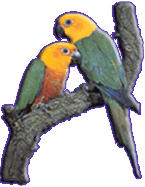| |
|
| |
| |
| |
| |
|
BERG - BRDSKI PAPAGAJ Polytelis Anthopeplus BERG - BRDSKI PAPAGAJ Polytelis Anthopeplus BERG - BRDSKI PAPAGAJ Polytelis Anthopeplus BERG - BRDSKI PAPAGAJ Polytelis Anthopeplus BERG - BRDSKI PAPAGAJ Polytelis Anthopeplus BERG - BRDSKI PAPAGAJ Polytelis Anthopeplus BERG - BRDSKI PAPAGAJ Polytelis Anthopeplus BERG - BRDSKI PAPAGAJ Polytelis Anthopeplus BERG - BRDSKI PAPAGAJ Polytelis Anthopeplus BERG - BRDSKI PAPAGAJ Polytelis Anthopeplus BERG - BRDSKI PAPAGAJ Polytelis Anthopeplus BERG - BRDSKI PAPAGAJ Polytelis Anthopeplus BERG - BRDSKI PAPAGAJ Polytelis Anthopeplus BERG - BRDSKI PAPAGAJ Polytelis Anthopeplus BERG - BRDSKI PAPAGAJ Polytelis Anthopeplus BERG - BRDSKI PAPAGAJ Polytelis Anthopeplus BERG - BRDSKI PAPAGAJ Polytelis Anthopeplus BERG - BRDSKI PAPAGAJ Polytelis Anthopeplus BERG - BRDSKI PAPAGAJ Polytelis Anthopeplus BERG - BRDSKI PAPAGAJ Polytelis Anthopeplus BERG - BRDSKI PAPAGAJ Polytelis Anthopeplus BERG - BRDSKI PAPAGAJ Polytelis Anthopeplus BERG - BRDSKI PAPAGAJ Polytelis Anthopeplus BERG - BRDSKI PAPAGAJ Polytelis Anthopeplus BERG - BRDSKI PAPAGAJ Polytelis Anthopeplus BERG - BRDSKI PAPAGAJ Polytelis Anthopeplus BERG - BRDSKI PAPAGAJ Polytelis Anthopeplus BERG - BRDSKI PAPAGAJ Polytelis Anthopeplus BERG - BRDSKI PAPAGAJ Polytelis Anthopeplus BERG - BRDSKI PAPAGAJ Polytelis Anthopeplus BERG - BRDSKI PAPAGAJ Polytelis Anthopeplus BERG - BRDSKI PAPAGAJ Polytelis Anthopeplus BERG - BRDSKI PAPAGAJ Polytelis Anthopeplus BERG - BRDSKI PAPAGAJ Polytelis Anthopeplus BERG - BRDSKI PAPAGAJ Polytelis Anthopeplus BERG - BRDSKI PAPAGAJ Polytelis Anthopeplus BERG - BRDSKI PAPAGAJ Polytelis Anthopeplus BERG - BRDSKI PAPAGAJ Polytelis Anthopeplus BERG - BRDSKI PAPAGAJ Polytelis Anthopeplus BERG - BRDSKI PAPAGAJ |
| |
|
|
| |
|
|
|
|
REGENT PARROT - SMOKER
Polytelis Anthopeplus |
|
|
| |
|
They are native to southeast and southwest regions of Australia . One of the reasons why they are not as numerous as other Australian parrots is that they were killed while eating on the roads. As well as Superb parrot, Smoker nests in regions of red acacia trees. |
|
|
Smoker's population, similar to some other Australian species, was divided into two groups because of great dryings of the central region of Australia . Eastern regions males have duller colorings, which show that the division was made many generations ago. |
|
These parrots are about 40cm long. The basic color of males is yellow; forehead and nape are a bit darker yellow. Back is olive green. Wings are 20 cm long. Central wing feathers in the inner side are green, while primaries and secondaries are black. The same wing feathers from the inner side are red. Wing coverts on the end of the wings are yellow. Tail is 22cm long. Upper side of the tail is dark green, while the out line is blue black. Males have black inner side of the tail, while females have black red and violet colorings on the inner side of the tail. Iris is oringe brown. They have red 2cm long, slihgtky bent beak. Legs are grey with black claws. Basic color of the female is olive yellow, while the throath is darker. Middle wing feathers are yellow. Tail is shorter than in males, and has blue green upper part. All these coloring decsriptions are for the adult, sexually mature Smokers. Juvenils have simillar but duller colorings, so both male and female are almost identical in early years. They mature in the age of three years old.
In captivity there are yellow and cimet mutations. Smoker have only one subspecies and that is Polytelis Anthopepelus Westralis. As a matter of fackt, this subspecies is the other group of those who devided a long time ago by geological ciklus. |
| |
|
| |
They have only one brood a year. The mating period begins in the first week of March. Female lays 2 to 4 white eggs and sits on them for the next 22 to 25 days. For the next six weeks chiks stay in the nest, untill fully feathered. After that time youngsters leave the nest, but they still stay with their parents for one more month, and this is the period when they learn all survivel skills they will need for living, like climbing, flying and eating on their own. When this one moth pasts youngsters leave their parents for good. Eventually, they will find their place, tree and mate.
When they are kept in captivity, they should be fed with seed mix of sunflower, oat, proso, canary seed, hemp and sorghum. Fresh fruit and vegetables are necessary. The best choise for fruit is apple, if possible, some sour kind. An apple is the only fruit that does not oxidize even for 24 hours, so it is safe to leave an apple in the cage, than some other fruit. This does not mean you should not feed your Smoker with other kind of fruit, too. However, allways have in mind that other fruit must not stay long in the cage. Vegetables are also very important, and Smokers enjoy them, too. Therefore, they should get spinach, carrots, cucumber, paprika and spircley. Lettuce, cabbage and all vegetables of cabbage family should be avoided. Even though Smokers will eat these kinds of vegetables, they can't digest it. The same stands for the bread, because of the yeast bird will get swollen and it could die. All fruits and vegetables should be well rinced and dried. Water should be changed every day, and sometimes even several times a day when it's vary hot. |
| |
|
|
| |
| a pair of Smokers
|
| |
|
|
| |
|
|
| |
|
|
|
| |
|
|
|
|
|

